The advent of new technology is helping people that require some level of assistance stay independent in their homes longer. One of the technologies taking the market by storm is the GrandCare System. The GrandCare System is finding its way into a number of areas including residences, small group homes and even larger independent and assisted living facilities.
In a nut shell, GrandCare is a three level system. Level one provides a social interface for the end-user, level two is a health and wellness monitoring portion and level three monitors daily activity. Throw in basic home automation control and you have a fully interactive monitoring system that will provide the assistance that is needed by a large portion of the population.
With the rising cost of healthcare, we need to find new solutions that allow early detection of potential problems and address them prior to hospitalization. One hospital admittance and the system can be paid for. Also, with the average cost of assisted living topping $50,000 per year….the cost of a system can be absorbed in a number of months and extend the ability to stay at home for years. Couple a GrandCare System with a PERS and medication management system and the cost is still well below assisted living.
Level One
The first part of the Grandcare is the social interface. This portion of the system is designed to keep the user in touch with the world (even without knowing how to use a computer). It provides a central place for family to share things like photos and information. The system provides a touch screen computer and can also be connected to a TV. The touch screen allows the user to access pre-set internet sites, receive and send email, listen to music, play games and more. When not being used for an activity, the system will display; photos (that can be uploaded by family), trivia, weather, news headlines, daily reminders and other items that the family and user can designate.
Level Two
Level two is something we all need! It is the Health and Wellness side of the system. Via a wireless interface, the system will monitor weight, blood pressure and pulse-ox. The caregiver/family member can create rules so when the system detects changes, it will notify them via email, text message or a simple phone call. (More on rules later). The system will also monitor the glucose levels of the user. Combine all of the monitoring with a complete reporting system that generates reports that can be printed out and given to your doctor. This provides a much more detailed and lengthy look of the patient allowing the doctor to make better decisions then they can when they get that ten or fifteen minute snap shot when you are in for a check-up.
Level Three
Level three is designed to monitor the daily activity of the occupants of the home. It is a non evasive way of ensuring that they are ok. The system will monitor doors, windows, the refrigerator….basically, anything that can be opened. It will also look at motion, lack of motion or excessive motion in any area that is monitored. For example, if a person gets out of bed at 7AM every day, the system can be programmed to watch for no motion in the home between say, 6AM and 8AM indicating they didn’t get up. It can also monitor if a person is in bed or out of bed and how much they are moving around. By doing that, we can determine how well someone sleeps and if they are not sleeping well address it so they sleep better. The system will also advise caregivers and family members if someone is out of bed for an extended period at night, possibly indicating a problem. With the ability to monitor just about anything combined with the rules that can be created, you can create a truly safe environment.
Care Notes
This is an area for caregivers and family members that visit the user to perform assistance tasks, check on wellbeing or for any other reason they stop in. The care notes allow a person to enter basic notes. For example, a daytime caregiver may leave a note for the overnight caregiver saying that the resident has the flu so make sure they are drinking fluids. Or a daughter may stop by and notice that dad has a cut on his head from a fall so he needs to be checked on from time to time for the next 24 hours. All of the care notes can be reviewed from any computer with an internet connection and are also sent out via email at the end of the day to the people that you designate. This allows everyone to stay up to date as to what is going on.
The Rules
The GrandCare System allows rules to be setup by the caregiver or family members. This is an extremely flexible part of the system and very easy to modify as needs or areas of concern change. Some of the systems that are similar to GrandCare use Artificial Intelligence (AI). This allows the computer to set rules based on what it determines is the “normal activity” of the user. That works well providing that when the system is installed, the user has no existing conditions. The system may decide that something that is truly an issue is normal activity.
The rules in the GrandCare System can be setup to send a message via Text Message, Email or can use an automated voice and place a phone call to a designated person. You can also use any combination of the notifications. You can also use rules to cause something to happen in the home, say turn on a light. A few examples follow;
1) If no motion is detected between 7AM and 9AM send a text message to caregiver 1
2) If any door opens between 10PM and 6AM call caregiver 2
3) If person gets out of bed between 10PM and 7AM turn on the bathroom light
4) If a person is out of bed for more the 15 minutes between 10PM and 7AM, call caregiver 1
5) If a glucose reading is below 100, call the home and say “ Your blood sugar is low please drink orange juice”
The rules that can be created are almost endless and can be modified as needed. This allows the system to be customized to today and then changed to meet tomorrow’s needs.
Dealers
You will want to work with a local and reputable authorized dealer. The system brings a lot of capabilities; however during setup and installation this can overwhelm and confuse the caregivers and family members. Plus, you want to get the most from the system. When the system is first installed, the dealer will help to determine the best layout of the sensors based on the individual needs and help setup the users and rules. Some dealers will have a follow-up meeting about two weeks after the installation to review rules, adjust sensors and make any changes that are needed now that the system has real data from day to day use. The dealer will charge a monthly fee that typically covers the monthly software license (charged by the manufacturer), the hosting for alert notification, software updates and sometimes on going service for hardware failure. Some dealers will even take care of rule changes, adding users and other ongoing software maintenance. Spend time with your dealer and ensure that they are a good fit for you and your family.
When all is said and done, this is a system that can greatly improve safety, independence and general daily life of the user. However, this is not a put it in and forget it system, you want to have the family(Children, Grandchildren, Cousins etc…no matter where they live) involved and keep the photos new and changing, sending emails to the user and keeping information fresh. This will help to keep someone who may be isolated from the rest of the world more active and involved.
About the author:
James Gleason is co-owner of JNL Technologies Inc, a company that is focused on safety systems both for the residential setting as well as assisted, independent and skilled care settings. James has spent the last 15 years working in this industry and serving our population

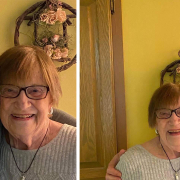
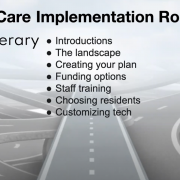
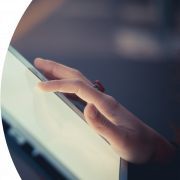
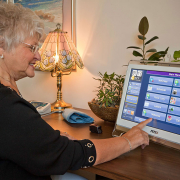
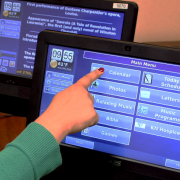
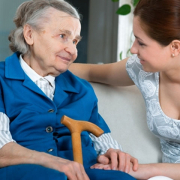
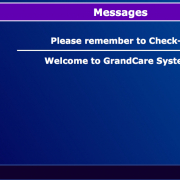
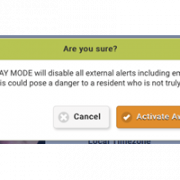
 If you or a loved one is facing these or any other common conditions affecting older adults, we know it’s a difficult, stressful situation to deal with. The goal of the GrandCare system is to use technology to help make managing and living with these conditions easier and less stressful, and to help seniors stay healthy and independent longer.
If you or a loved one is facing these or any other common conditions affecting older adults, we know it’s a difficult, stressful situation to deal with. The goal of the GrandCare system is to use technology to help make managing and living with these conditions easier and less stressful, and to help seniors stay healthy and independent longer.
